Last year I bought a bundle of 7’ bamboo stakes specifically to build a reliable tomato trellis. I built a beefy structure that performed well, but it had drawbacks. Here is last year’s trellis post.
This year I’ve simplified the design. I eliminated the traditional tomato cages. In a well-trellised system, the cages are only in the way. They are hard to weed around and fruit gets wedged in the wires. I’m also using the t-posts that hold up the structure as trellising stakes for the plants adjacent to the posts, so I’m using less bamboo than last year.
As the tomatoes grow, I’ll start lacing the main stem to the stakes. I’m going to be more aggressive in pruning than in previous years and probably trim down to two leaders (main branches) per plant in most cases.
The trellises work well with my three across tomato plant arrangement.
The larger trellis supports 33 tomato plants.
The smaller structure supports 27 plants.
I like using t-posts for trellising in open raised beds. They can stand up to any wind and hold huge loads. And they can be integrated with all types of trellising materials. While they require a little bit of physical effort to set up, I think the benefits make them an ideal choice for trellis supports.

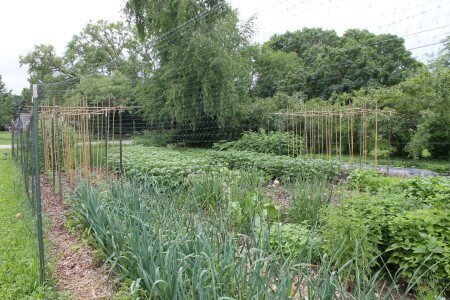
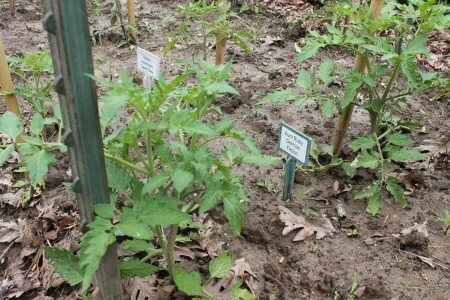
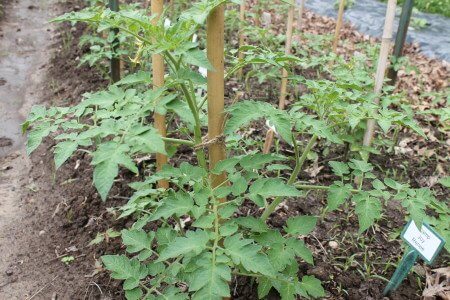
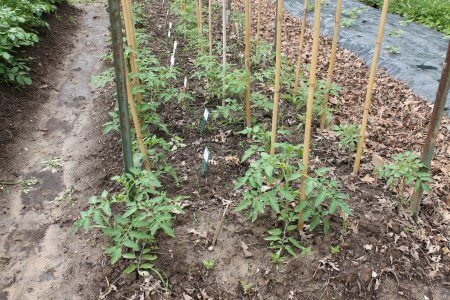
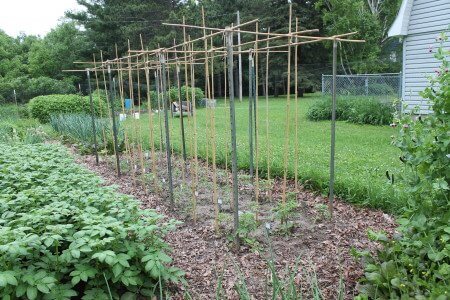
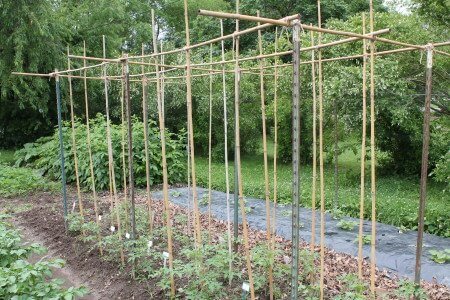
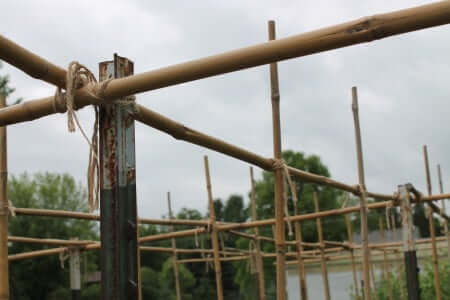
Great information that is adequately illustrated and well explained. I am starting duty in a friend’s large vegetable garden repairing the tomato vines that are encroaching everywhere. The rain and hot sun of the last two weeks put growth into high gear.
What do you do with the bushel baskets of tomatoes you grow?
We freeze most, either as pasta sauce, or plain. Some goes into salsa. We don’t can much anymore. We give away what we can and we gorge on tomato sandwiches when the big slicers are in production.